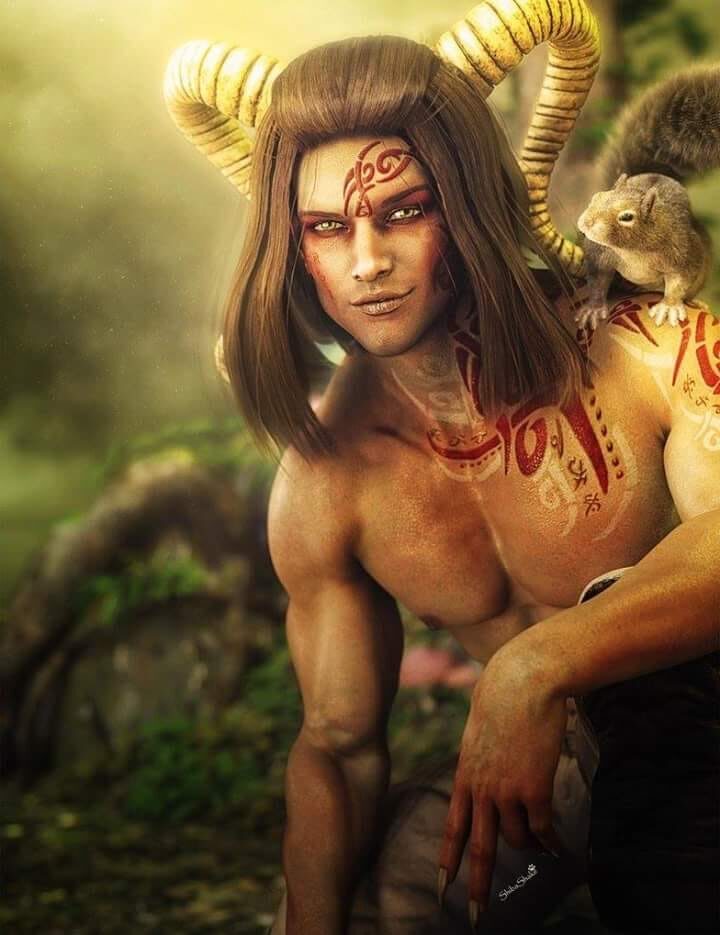
The Horned God
Who is this wild God who roams the forests, and who loves and protects the Goddess and all her children? He is called the God of the Wicca, Cernunnos, Pan, Herne, Dionysus and many other names. He is the ancient God of fertility: the God of the forest, flock and field and also of the hunt. He is Lord of Life and He gives life, He is also Lord of Death and Resurrection. He is the hunter and the hunted, he is the light and the darkness.
The first known representation of a Horned Deity is in the Caverne des Trois Freres in Ariege 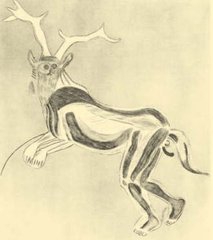 created during the Paleolithic period. The wall painting depicts a man wearing animal skin with stag antlers on his head. The figure is thought to represent God incarnate performing a sacred dance of sympathetic magick to increase the number of animals for the tribe to hunt.
created during the Paleolithic period. The wall painting depicts a man wearing animal skin with stag antlers on his head. The figure is thought to represent God incarnate performing a sacred dance of sympathetic magick to increase the number of animals for the tribe to hunt.
Representations of a Horned God were common in Mesopotamia, Babylonia and Egypt. The greatest Egyptian Horned God is Osiris, 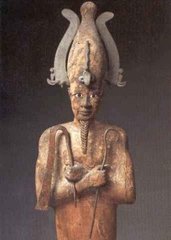 the giver of all fertility who was often depicted with the horns of a bull. Osiris was believed to be incarnate, in a succession of sacred bulls, and worshipped in that form as the God Apis. This was yet another form and manifestation of Osiris as the God of Fertility and also of Death and Resurrection. And Osiris bears the marks of a lunar, rather than a solar God, for Set tears the body of Osiris into fourteen pieces, the number of days of the waning moon; and then Isis, the Great Mother, gathers those pieces together and restores Osiris to life again.
the giver of all fertility who was often depicted with the horns of a bull. Osiris was believed to be incarnate, in a succession of sacred bulls, and worshipped in that form as the God Apis. This was yet another form and manifestation of Osiris as the God of Fertility and also of Death and Resurrection. And Osiris bears the marks of a lunar, rather than a solar God, for Set tears the body of Osiris into fourteen pieces, the number of days of the waning moon; and then Isis, the Great Mother, gathers those pieces together and restores Osiris to life again.
Pan is the most well known Greek Horned God who has the body of a man and the head of a goat. Pan, the bearded goat foot God leads a procession of dancing of satyrs and nymphs while he plays the pipes that bear his name. His worship was so hated by the church that his image was used to describe the "Devil" and they called him the Lord of all Evil.
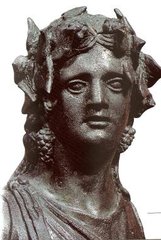 Dionysus another Horned God of Greece, is a creature of mystery, his very essence an enigma. His realm is shadowy, and his followers flirt with madness, drunkenness, and death. He is the patron deity of the Bacchantes, those wild women who were said to tear living animals apart in their trance of divine possession. He is the god of wine and intoxication that merges the drinker with the deity. He is also a "Slain God", that is a God who dies and is reborn. For a Greek God to die was unthinkable, how can an immortal die? Through the death and rebirth of the God, the Cult of Dionysus, like that of the Goddess Demeter brought forth the mystery of rebirth to their followers.
Dionysus another Horned God of Greece, is a creature of mystery, his very essence an enigma. His realm is shadowy, and his followers flirt with madness, drunkenness, and death. He is the patron deity of the Bacchantes, those wild women who were said to tear living animals apart in their trance of divine possession. He is the god of wine and intoxication that merges the drinker with the deity. He is also a "Slain God", that is a God who dies and is reborn. For a Greek God to die was unthinkable, how can an immortal die? Through the death and rebirth of the God, the Cult of Dionysus, like that of the Goddess Demeter brought forth the mystery of rebirth to their followers.
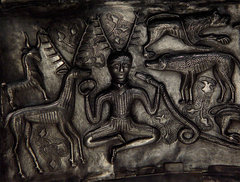 The Greatest God of western Europe was Cernunnos whose name simply means "the horned". Cernunnos is depicted as a mature bearded man with stag antlers wearing a torc. A torc implies nobility in the Celtic culture. Cernunnos often carries or wears other torcs in his hands or on his antlers and also carries a purse of coins. He is usually portrayed seated and cross-legged, in a meditative or shamanic position.
The Greatest God of western Europe was Cernunnos whose name simply means "the horned". Cernunnos is depicted as a mature bearded man with stag antlers wearing a torc. A torc implies nobility in the Celtic culture. Cernunnos often carries or wears other torcs in his hands or on his antlers and also carries a purse of coins. He is usually portrayed seated and cross-legged, in a meditative or shamanic position.
Cernunnos is nearly always depicted with animals and is sometimes called the "Lord of the Animals", the "Lord of Wild Things" or "Lord of the Hunt". He also associates with an animal that is unique to him, a serpent with the horns of a ram. The serpent's symbolism is transformation and the horns symbolize fertility and strength.
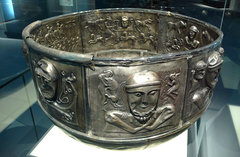
The earliest known probable depiction of Cernunnos was found at Val Camonica in Italy, dating from the 4th century BCE, while the best-known depiction is on the Gundestrup Cauldron found on Jutland, dating to the 1st century BCE.
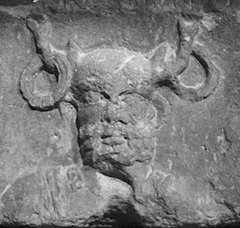
On an altar found under the cathedral of Notre Dame in Paris is a large image of Cernunnos dating from 14 CE. This site was so sacred that the cathedral was built over it to entice worship of the new religion.
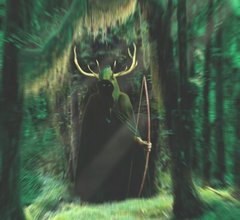
In Britain, the first recorded instance of the continued worship of the Horned God was in 1303 when the Bishop of Coventry was accused of paying homage to the Horned God. In the late 1300's King Richard II employed a hunter in Windsor forest named Herne who saved the King's life when he was attacked by a white hart (deer). Herne was mortally wounded but was brought back to life by a wizard who tied the dying hart's antlers to his head. In exchange for his life Herne was made to give up his hunting skills and was defamed by his fellow hunters. He then lost favor with the King and hanged himself from an Oak tree. His ghost is said to haunt Windsor forest to this day.
Sometimes a keeper here in Windsor Forest,
Doth all the winter-time, at still midnight,
Walk round about an oak, with great ragg'd horns;
And there he blasts the tree, and takes the cattle,
And makes milch-kine yield blood, and shakes a chain
In a most hideous and dreadful manner.
You have heard of such a spirit, and well you know
The superstitious idle-headed eld
Receiv'd, and did deliver to our age,
This tale of Herne the Hunter for a truth.
— William Shakespeare, The Merry Wives of Windsor
CHARGE OF THE GREAT HORNED GOD
I am the summer winds that rustle through your spirit
and stir the whispering leaves of your soul.
I am the wild and darksome stag
that raises horn and hoof within your wildest places.
I am the oaken-mossed caress that softens you
with velvet fronds of green.
I am the guardian at the gates to the underworld –
Open your heart to me.
I am the Great and Horned One
with whom your earth and stream do dance their days
I am the Wise One, carved with timeless gems of radiance inspired.
I am the one that strikes the lightning tree
And paints the sky with storm and sun.
I am the woodland warrior cloaked in frankincense –
Open your heart to me.
I am the ripening light that warms your fruits and seeds
Lush colours sweetened deep upon the bough.
I quench my thirst on Urth’s morning dew
I dance upon my Lady’s mantle green
whose snaking paths I find and tread so free.
I am the dragon’s treasure in your breast –
Open your heart to me.
Sally Morningstar

8840552

